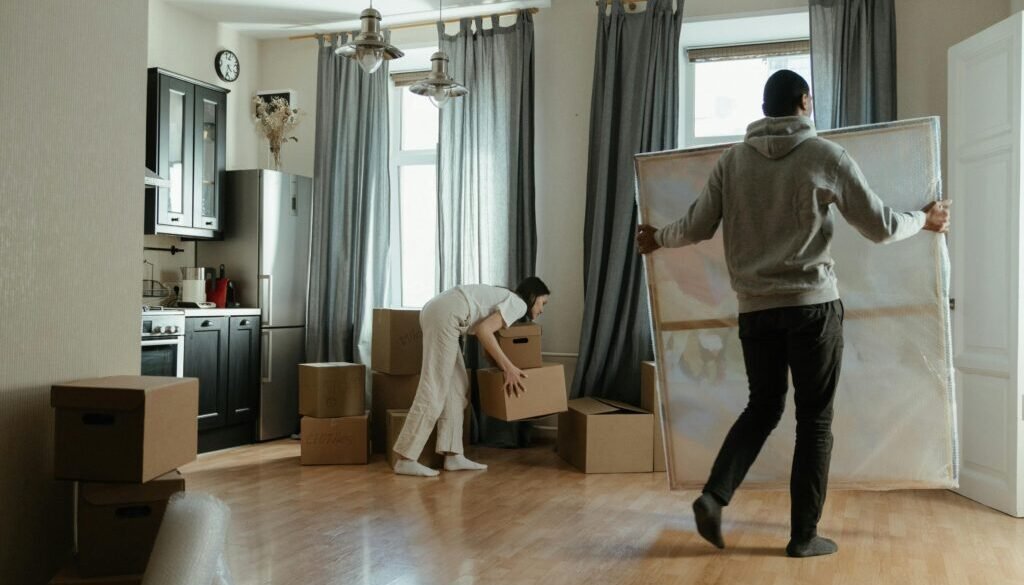The Hidden Costs of Moving: What to Watch Out For
Moving to a new home is one of life’s major events, whether you’re relocating across town or to a completely different city. However, while you may focus primarily on the excitement of your new space, the process of moving can come with unexpected costs. Hidden moving expenses are often overlooked until it’s too late, leading to a significant increase in your moving budget. From packing materials to last-minute fees, understanding these costs can help you plan for a more affordable move and avoid any unwelcome surprises.
In this blog post, we’ll dive into the hidden costs of moving and share tips on how to anticipate and manage them.
1. Packing Materials: More Than Just Boxes
Packing materials are often one of the first overlooked moving expenses. While it’s easy to think that all you need are boxes, the reality is that there are several other materials necessary to protect your belongings during transit. These costs can quickly add up. Common packing materials include:
- Bubble wrap and packing peanuts: To protect fragile items such as glassware, electronics, and artwork.
- Packing paper: Essential for wrapping delicate items or filling empty spaces in boxes to prevent shifting.
- Tape: You’ll need a lot of tape to seal boxes securely.
- Specialty boxes: Items like dishes, lamps, or wardrobes may require specialized boxes for proper protection.
Most people underestimate how much they’ll need or forget to factor in these costs, leaving them scrambling to purchase more materials as they go. It’s wise to plan ahead and shop around for discounts or even consider second-hand packing materials such as old newspapers or used boxes from local stores.
2. Additional Movers or Labor Costs
Many people hire a moving company to transport their belongings, but the quoted price might not cover all potential expenses. Most removalist companies offer a base rate, which includes loading and unloading. However, if you have a larger home, special items, or a more complicated move, there are additional costs to consider. These may include:
- Hourly rates: Some movers charge an hourly rate for the amount of time spent on your move, which can fluctuate based on how long the move takes. If the move runs longer than expected, this can quickly escalate the cost.
- Extra labor charges: If you have heavy or oversized items like furniture, pianos, or exercise equipment, there may be an additional charge for special handling.
- Stair fees or elevator fees: If you’re moving to or from an apartment without easy access to the elevator, movers may charge an extra fee for navigating stairs.
- Long-distance carry fees: If your apartment or house is far from the loading zone or requires the movers to carry heavy items over long distances, this can incur an additional charge.
These additional charges can add up, so it’s crucial to clarify all potential fees with your moving company upfront to avoid surprises on moving day.
3. Moving Insurance
Accidents can happen during a move, especially when it comes to valuable or fragile items. While moving companies often offer basic coverage, it might not fully protect your belongings if something goes wrong. That’s why many people choose to purchase additional moving insurance to ensure their items are fully covered during transit.
Moving insurance can vary greatly depending on the level of coverage you choose. The two most common types are:
- Basic Coverage: This is often included in the price of your move but may only cover a portion of the value of your damaged items.
- Full Value Protection: This is a more comprehensive option where the moving company takes responsibility for the full replacement value of your items.
Though insurance can seem like an unnecessary expense, it can offer peace of mind, especially if you’re moving valuable or fragile possessions.
4. Utility Connection and Disconnection Fees
One often-overlooked cost in the moving process is the connection and disconnection of utilities. Depending on where you’re moving to, you may need to transfer or set up services like electricity, water, gas, internet, and cable. These services might come with hidden fees, including:
- Connection fees: Charges for initiating a new service at your new home or office.
- Disconnection fees: Some service providers charge a fee for disconnecting services at your old location.
- Setup fees: In addition to the connection fee, some utility companies charge a one-time setup fee for new installations.
While these fees are often relatively small, they can quickly add up, especially if you have multiple services to set up. Be sure to ask your service providers about any fees and take note of them before your move.
5. Cleaning Costs
Many leases or sales contracts require the space to be professionally cleaned before you leave or when you move in. If you’re renting, you may need to pay for professional cleaning to ensure you get your full security deposit back. Even if you own the property, cleaning costs may be necessary to ensure the home is in pristine condition for the new tenants or owners.
Cleaning costs may include:
- End-of-lease cleaning: A professional cleaner can charge a few hundred dollars to do a deep clean of your old home.
- Carpet cleaning: If your carpets are stained or you simply want to leave the home looking its best, professional carpet cleaning services might be needed.
- Move-in cleaning: In some cases, your new home may require cleaning before you start unpacking.
While it’s not a cost many people anticipate, cleaning fees are a reality when moving, especially if you want to leave a good impression or comply with lease agreements.
6. Unforeseen Repairs or Maintenance
Before you move into a new home, it’s important to ensure that the property is in good condition. However, sometimes you might find hidden issues that need immediate attention, such as:
- Plumbing or electrical repairs: Minor issues can sometimes become major problems if not addressed before you settle in.
- Broken appliances or fixtures: The previous owner or landlord may have left behind malfunctioning appliances or damaged fixtures.
- Pest control: If there’s an infestation in your new home, you may need to call in pest control services, which can come with a cost.
Be sure to thoroughly inspect your new home before the move to address these potential problems and avoid unexpected repair costs.
7. Parking Permits and Tolls
If you’re moving to a densely populated area or somewhere with restricted parking, you might need to secure a parking permit for your moving truck. Some cities and neighborhoods require a temporary permit for moving trucks to park in front of your home. Additionally, if you’re moving across state lines or through areas with toll roads, those fees can add up quickly.
These additional charges are easy to forget but can impact the overall cost of your move. Ensure you check with local authorities and your moving company about any necessary permits or tolls before the big day.
8. Storage Fees
If your new home isn’t ready or you simply have too much stuff, you may need to store your belongings temporarily. Storage fees can be a significant cost, especially if you need to rent a unit for a longer period. The cost of storage will vary depending on the size of the unit and its location. It’s important to factor in these potential fees when planning your move.
Conclusion
The process of moving can be expensive, and it’s easy to overlook some of the hidden costs that can significantly increase your total budget. From packing materials and extra labor charges to utility fees and cleaning services, being prepared for these expenses can help reduce stress and ensure your move stays within your budget. Be sure to plan ahead, ask the right questions, and set aside a contingency fund to cover these hidden costs. By doing so, you’ll be able to enjoy your new home without the financial headache.







